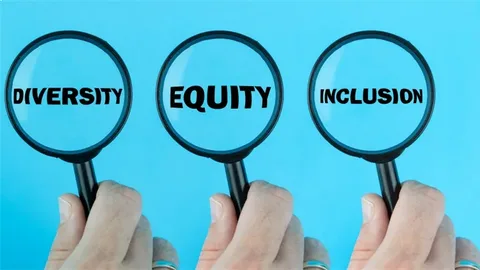Advancing Equity: Transforming Marginalized Communities Through Inclusion and Opportunity

The quest for social justice and equity remains one of the defining challenges of our time. Marginalized communities—whether in urban slums, rural villages, or underserved regions—face systemic barriers that restrict access to essential resources like education, healthcare, and economic opportunities. These barriers, rooted in historical inequities and social exclusion, perpetuate cycles of poverty and disenfranchisement. Yet, through a dynamic blend of community empowerment, sustainable policy reforms, and advocacy, we can dismantle these obstacles and pave the way for inclusive progress. This article explores how these strategies can transform marginalized communities, fostering a society where opportunity and equity are accessible to all.
Community Empowerment: The Heart of Transformation
At the core of lasting change lies community empowerment, where local voices drive solutions tailored to specific needs. Empowering underserved populations means trusting them to lead their own progress, equipped with the right resources and support. In underserved urban areas, for instance, community-led initiatives like youth mentorship programs have provided pathways to education and employment. These programs not only build skills but also instill confidence, enabling young people to break free from systemic constraints.
In rural settings, cooperative models have proven equally impactful. In parts of Latin America, farmer collectives have pooled resources to access modern agricultural tools, increasing yields and boosting economic mobility. These efforts demonstrate that when communities are given agency, they can address challenges like food insecurity and unemployment with precision and resilience. By investing in grassroots initiatives, we can create sustainable frameworks that empower marginalized groups to shape their own futures.
Sustainable Policies: Laying the Foundation for Equity
Grassroots efforts thrive when supported by robust, equitable policies. Sustainable policy reforms are essential for addressing systemic inequities and ensuring that resources reach those who need them most. For example, policies that expand access to quality education—such as building schools in underserved areas or offering scholarships—can unlock opportunities for generations. In regions with limited healthcare infrastructure, mobile clinics and subsidized services have improved health outcomes, enabling individuals to pursue economic and social goals.
Public safety initiatives are another critical pillar. In marginalized communities, programs like community policing or restorative justice have reduced violence while fostering trust between residents and authorities. These initiatives create safe environments where individuals can thrive, free from fear. By prioritizing equity and inclusion in policy design, governments can dismantle structural barriers and create systems that uplift underserved populations. Sustainable policies not only address immediate needs but also lay the groundwork for long-term progress.
Economic Mobility: Pathways to Prosperity
Economic mobility is a cornerstone of empowering marginalized communities. Access to jobs, financial services, and entrepreneurial opportunities can transform lives and revitalize entire neighborhoods. Microfinance programs, for instance, have enabled women in underserved regions to start small businesses, fostering financial independence and community growth. In Africa, mobile banking platforms have brought financial inclusion to remote areas, allowing individuals to save, invest, and build sustainable livelihoods.
Success stories highlight the transformative potential of economic empowerment. In the United States, community development organizations have provided loans to minority entrepreneurs, spurring local economic growth. In South Asia, vocational training programs tailored to local industries have equipped young people with skills for stable careers. These initiatives show that targeted interventions can break cycles of poverty, turning struggle into strength. By expanding access to economic opportunities, we can create pathways to prosperity for marginalized communities.
Advocacy and Change: Amplifying Marginalized Voices
Advocacy is a powerful catalyst for systemic change. By amplifying the voices of underserved populations, advocates can influence policies and challenge entrenched inequalities. Grassroots advocacy groups have been particularly effective in advancing social justice. For example, campaigns led by indigenous communities have secured land rights, preserving cultural heritage while promoting economic stability. Similarly, advocacy for affordable housing has protected vulnerable populations from displacement in rapidly gentrifying areas.
Global advocacy networks amplify these efforts, sharing strategies and success stories across borders. Organizations working on issues like healthcare access or education reform have driven policy changes that benefit millions. Advocacy is not just about raising awareness; it’s about holding systems accountable and ensuring that marginalized communities have a seat at the decision-making table. Through persistent, collective action, advocacy transforms individual challenges into opportunities for systemic reform.
Public Safety and Opportunity Access: A Unified Approach
Safe communities are essential for growth and opportunity. Public safety initiatives that prioritize engagement—such as youth outreach programs or community-led safety councils—have proven effective in reducing crime and building trust. In underserved areas, these programs create environments where individuals can pursue education, employment, and personal growth without fear.
Opportunity access is equally critical. Programs that provide scholarships, job training, or affordable healthcare remove barriers to progress. For example, subsidized childcare initiatives have enabled parents in marginalized communities to pursue careers or further their education. In regions with high unemployment, job fairs and skills workshops have connected individuals with employers, fostering economic inclusion. By integrating public safety and opportunity access, we can create holistic solutions that empower communities to thrive.
The Future of Inclusive Progress
The vision of a just and equitable society requires a multi-faceted approach. First, community empowerment must be supported with funding and infrastructure to scale grassroots initiatives. Second, sustainable policies must prioritize equitable resource distribution, ensuring access to education, healthcare, and economic opportunities. Third, advocacy must continue to amplify marginalized voices, driving systemic change. Finally, public safety and opportunity access must work in tandem to create environments where individuals can flourish.
Inspiring examples light the way. In Australia, indigenous-led programs have revitalized communities by combining cultural preservation with economic development. In Southeast Asia, women’s cooperatives have empowered thousands by providing access to markets and financial services. These success stories demonstrate that inclusive progress is achievable when communities, governments, and advocates collaborate. By scaling these models, we can create a blueprint for a world where equity is the norm.
Conclusion
Advancing equity for marginalized communities demands a steadfast commitment to social justice and inclusion. Through community empowerment, sustainable policies, advocacy, and integrated approaches to safety and opportunity, we can dismantle systemic barriers and create pathways to prosperity. Economic mobility and public safety are not just aspirations but essential components of a thriving society. As we look to the future, let us celebrate the resilience of underserved populations and invest in strategies that transform challenges into opportunities. By building bridges to equity, we can create a world where every individual has the chance to thrive, and no one is left behind.
Note: IndiBlogHub features both user-submitted and editorial content. We do not verify third-party contributions. Read our Disclaimer and Privacy Policyfor details.







